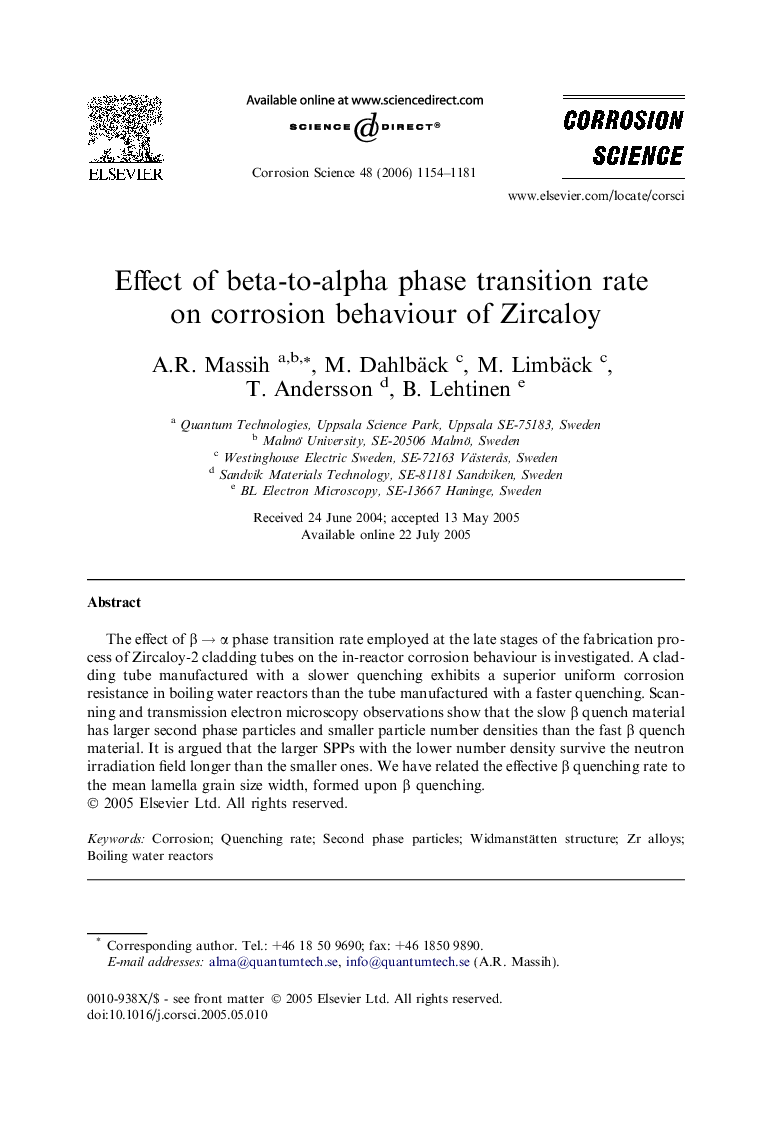| Article ID | Journal | Published Year | Pages | File Type |
|---|---|---|---|---|
| 1471826 | Corrosion Science | 2006 | 28 Pages |
The effect of β → α phase transition rate employed at the late stages of the fabrication process of Zircaloy-2 cladding tubes on the in-reactor corrosion behaviour is investigated. A cladding tube manufactured with a slower quenching exhibits a superior uniform corrosion resistance in boiling water reactors than the tube manufactured with a faster quenching. Scanning and transmission electron microscopy observations show that the slow β quench material has larger second phase particles and smaller particle number densities than the fast β quench material. It is argued that the larger SPPs with the lower number density survive the neutron irradiation field longer than the smaller ones. We have related the effective β quenching rate to the mean lamella grain size width, formed upon β quenching.
